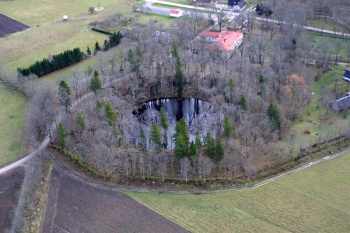|
Around 400BC a meteorite struck Saaremaa Island, now
in Estonia, and created a
110m wide crater known as
Lake Kaali.
Unlike Tunguska it fell
in the middle of a densely populated area.
Researchers have revealed an amazing human story.
The disputed 400BC date is from analysis of iridium,
C14, and pollen.
The nearby
village
Asva burned at
roughly the same time, an intriguing coincidence.
Pollen data suggests nearby farms were abandoned for about 100 years
after the impact.
There was a highly fortified wall built on the crater rim right after
the explosion.
A large meteorite has never been found; possibly because it became
the source for local iron tools.
The historical record is astonishing as well. The Kalevala, the Finnish national epic, may record the story. Pytheas of Massalia was in the area 350-325BC and wrote of "the grave where the sun fell dead". The Argonautica of Apollonius of Rhodes (3rd C. BC) may describe the lake:
...where once, smitten on the breast by the blazing bolt, Phaethon
half-consumed fell from the chariot of Helios into the opening of that
deep lake; and even now it belcheth up heavy steam clouds from the
smouldering wound.
I love how astronomy, archæology, and literature
combine to describe an event at the edge of human
history.
—The Argonautica Book 4, Section 529-626
As seen in A Traveller's Guide to Mars
|
||

